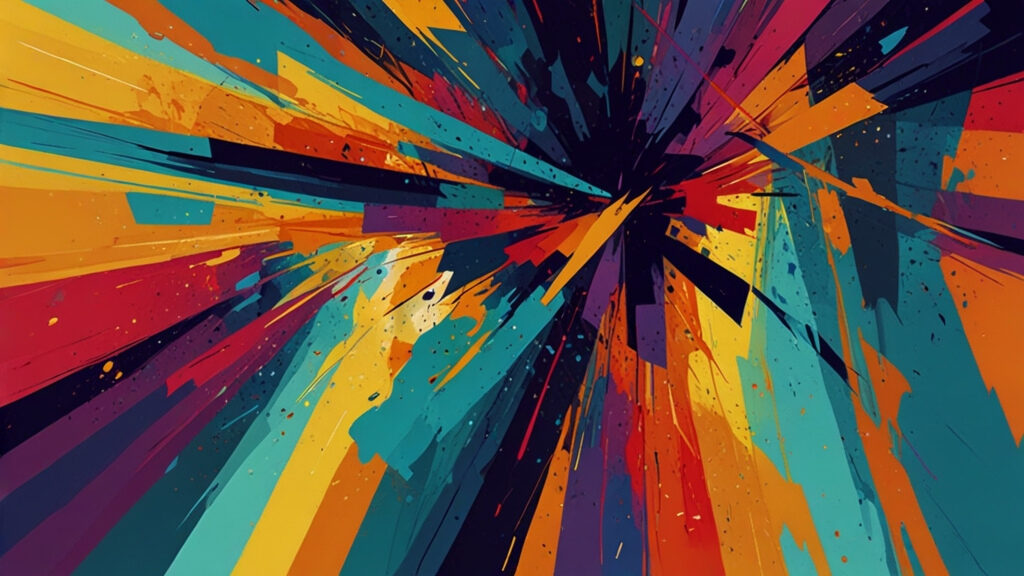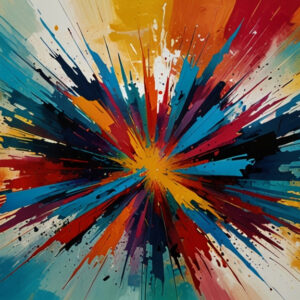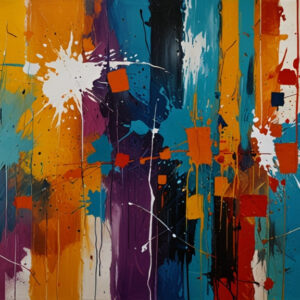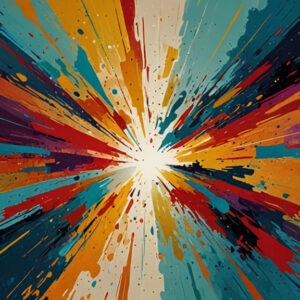Description
3D modeling has transcended beyond video games and movie production to become a vital part of industries like architecture, product design, interior design, and hospitality. The ability to create detailed three-dimensional objects allows for enhanced visualization, better decision-making, and improved collaboration between designers and clients. For bars, which are a focal point for many social gatherings and experiences, designing an appealing space has become crucial to success.
Bars today are not just places to grab a drink but are becoming experiences in themselves. From the design of the furniture to the lighting, every detail matters. The rise of online services offering customized 3D bar model creation allows owners, architects, and interior designers to visualize and fine-tune every part of the bar before breaking ground.
Why 3D Bar Models?
Designing a bar from scratch involves more than just arranging furniture and installing lighting. It requires understanding the flow of the space, the ambiance, how different materials will look, and how the overall design will impact customer experience. A customized 3D bar model art service enables individuals to design every single aspect of the bar, from seating arrangements to decor, in a highly detailed and immersive way.
This service can offer significant advantages in terms of conceptualization and planning:
- Visualization: Clients can see their ideas brought to life with realistic detail before any physical work is started.
- Customization: Every aspect of the bar can be adjusted and fine-tuned, from materials to lighting, seating, and décor.
- Collaboration: Designers and clients can work together seamlessly, sharing ideas and providing feedback in real-time using the 3D models.
- Cost-effective Planning: Identifying potential design flaws or inefficiencies through virtual models can save on costs that would otherwise be incurred during construction.
The Online Customized 3D Bar Model Creation Process
For many businesses and individuals, the process of getting a customized 3D bar model created online is seamless and easy, thanks to advanced software tools and the availability of professional designers. Here’s a step-by-step breakdown of how the process typically works:
1. Initial Consultation and Requirements Gathering
The journey begins with a thorough consultation between the client and the design team. During this phase, the client shares their vision, goals, budget, and any specific requirements they might have. This can include the overall theme of the bar, the desired atmosphere (modern, classic, rustic, etc.), the seating arrangement, the layout of the bar counter, lighting, and more.
Clients may also provide reference materials, such as mood boards, existing architectural plans, or even sketches of their ideas. Some services also offer an initial questionnaire to help the client clarify their ideas and preferences.
2. Conceptual Design
Once the requirements have been clearly defined, the design team begins work on a conceptual model. This early-stage model typically focuses on the layout and general aesthetic of the bar without too much detail.
At this point, the client is presented with the initial concept in the form of basic 3D renders or wireframe models. These are not yet fully detailed but provide enough information to communicate the overall direction of the project.
Clients have the opportunity to provide feedback, make changes, and refine their vision during this phase. They may also be introduced to different styles, materials, and designs they hadn’t initially considered.
3. Detailed Modeling
Once the conceptual design has been approved, the next phase involves creating a highly detailed 3D model of the bar. This is where the magic happens. Every element of the bar is crafted with precision, from the texture of the countertops to the lighting effects and seating details.
This detailed model incorporates all the features necessary to provide an accurate and immersive experience:
- Materials: Detailed textures and materials are applied to every surface, allowing clients to see how wood, metal, marble, and other materials will look in their bar.
- Lighting: Lighting is critical in creating the right ambiance for a bar. The model will incorporate various lighting options, showing how the space will look under different conditions.
- Furniture and Fixtures: Everything from the bar stools to the tables, chairs, and shelving will be included in the model with accurate dimensions and styles.
- Layout and Flow: Clients can explore different seating arrangements, walking paths, and even check the functionality of the space in terms of customer flow and ease of service.
4. Real-Time Interaction and Revisions
One of the advantages of using an online 3D modeling service is the ability for clients to interact with the model in real-time. Many services offer interactive platforms where clients can view their bar model from different angles, zoom in on details, and even walk through the virtual space as if they were actually in the bar.
This interactivity allows for instant feedback and revisions. Clients can request changes to the layout, design, or materials and see those changes applied in real-time. This iterative process ensures that the final design perfectly matches the client’s vision before construction begins.
5. Final Delivery: 3D Model and Renderings
Once all revisions have been completed and the client is satisfied with the design, the final 3D model is delivered. This can come in several formats depending on the client’s needs:
- High-resolution renderings: Photorealistic images of the bar from various angles, showing off the materials, lighting, and design elements in all their glory.
- 3D model files: The actual 3D model in formats like OBJ, FBX, or STL, which can be used for further visualization, VR integration, or even 3D printing.
- Virtual tours: Some services also offer virtual walkthroughs or 360-degree panoramas that allow clients to explore the space interactively.
Key Features and Technologies Used
The creation of a custom 3D bar model involves a variety of cutting-edge technologies and design tools. Here are some of the key features and tools commonly used:
1. 3D Modeling Software
High-end 3D modeling software like Blender, SketchUp, or Autodesk 3ds Max is used to create detailed models. These tools allow designers to craft every detail of the bar with precision and realism.
Blender is a popular choice due to its flexibility and powerful rendering engine, while SketchUp is known for its ease of use and architectural focus. Autodesk 3ds Max offers advanced tools for detailed modeling, including materials, lighting, and textures.
2. Rendering Engines
Photorealistic rendering engines like V-Ray or Arnold are often used to bring the 3D models to life. These tools simulate real-world lighting, shadows, and reflections to produce images that look just like photographs. The combination of realistic lighting and accurate materials helps clients to visualize exactly how their bar will look in real life.
3. Virtual Reality (VR) and Augmented Reality (AR) Integration
Some services go a step further by offering VR and AR integration. VR allows clients to step inside their virtual bar using VR headsets like the Oculus Rift or HTC Vive. This immersive experience provides a true sense of scale and atmosphere that static renderings can’t match.
AR, on the other hand, allows clients to overlay the 3D model of their bar into a real-world environment using a smartphone or tablet. This is particularly useful for visualizing how the bar will fit within a pre-existing space, such as a room or outdoor area.
4. Collaboration Platforms
Online services often include collaboration tools that allow clients and designers to work together seamlessly. Platforms like Frame.io, Trello, or even custom-built solutions enable real-time feedback, file sharing, and version control.
Benefits of a Customized 3D Bar Model
Now that we’ve covered the process and technology behind customized 3D bar models, let’s explore the tangible benefits of using such a service:
1. Improved Decision-Making
By visualizing the bar in 3D before construction, clients can make more informed decisions about layout, materials, and design. They can experiment with different options, see how they look, and choose the best one based on real-time feedback.
2. Cost and Time Savings
Making changes during the construction phase can be costly and time-consuming. With a 3D model, any adjustments or improvements can be made in the virtual world, saving both time and money. Clients can avoid costly mistakes and ensure that the final result matches their expectations.
3. Enhanced Creativity
The flexibility offered by 3D modeling allows for limitless creativity. Designers and clients can experiment with bold and innovative designs without the constraints of traditional 2D drawings or blueprints.
4. Customer Engagement
For businesses, presenting a 3D model of a bar can enhance customer engagement. Whether it’s showing investors a detailed rendering or offering customers a virtual tour before opening day, the 3D model can generate excitement and build anticipation.
5. Scalability and Reusability
Once the 3D model is created, it can be easily modified or reused for future projects. For example, if the bar owner decides to open a second location, the same model can be tweaked to fit a new space, saving time and effort.
Real-World Applications of 3D Bar Models
Customized 3D bar models have found a variety of applications in the real world. Here are some scenarios where these models have been effectively utilized:
1. Bar Owners and Entrepreneurs
Bar owners looking to open a new establishment or renovate an existing one can use 3D models to experiment with different designs and layouts. This allows them to create a space that reflects their brand and appeals to their target audience.
2. Interior Designers and Architects
For interior designers and architects, 3D models offer a powerful tool for presenting ideas to clients. They can showcase different design options, materials, and layouts, allowing clients to visualize the final result.
3. Event Planners
Event planners organizing large-scale events, such as weddings, corporate parties, or festivals, can use 3D bar models to design temporary bars and beverage stations. This ensures that the setup is both functional and visually appealing.
4. Marketing and Promotion
Businesses can use 3D bar models in their marketing materials, such as websites, social media, and promotional videos. High-quality renderings and virtual tours provide a unique way to showcase the bar’s design and generate interest before the venue opens.
5. Virtual Reality Experiences
With the integration of VR, some businesses are offering virtual bar experiences. These immersive environments allow customers to explore a bar, interact with virtual bartenders, and even attend virtual events, all from the comfort of their homes.
The Future of Customized 3D Bar Model Services
As technology continues to advance, the future of customized 3D bar model services looks incredibly promising. Here are some trends that are likely to shape the industry:
1. AI-Assisted Design
Artificial intelligence (AI) is already being used to assist with 3D modeling, and this trend is expected to grow. AI-powered tools can help designers generate ideas, optimize layouts, and even suggest materials and lighting options based on the client’s preferences.
2. More Immersive Virtual Reality Experiences
As VR technology becomes more accessible, we can expect even more immersive virtual bar experiences. Customers will be able to explore bars in full 3D, attend virtual events, and even customize their own virtual bar spaces.
3. Increased Sustainability
With a growing focus on sustainability, 3D modeling services may start incorporating eco-friendly materials and design practices. Clients will be able to experiment with sustainable materials, such as recycled wood or energy-efficient lighting, in their virtual bar models.
4. Customization at Scale
As the demand for personalized experiences grows, 3D bar model services will likely offer even more customization options. Clients will be able to choose from a wider range of styles, materials, and designs, ensuring that their bar is truly unique.
5. Integration with Augmented Reality for Real-World Implementation
The continued development of augmented reality (AR) will further enhance the practical applications of 3D models. Imagine walking into an empty space with your smartphone and seeing your customized 3D bar model projected onto the environment in real-time. This level of interactivity will make it easier for clients to visualize how their bar will fit within a specific space.
Conclusion
The online service of creating customized 3D bar models represents the future of design in the hospitality industry. By leveraging cutting-edge technologies such as 3D modeling, rendering, virtual reality, and augmented reality, these services provide unparalleled opportunities for creativity, collaboration, and innovation.
Whether you’re a bar owner, interior designer, event planner, or entrepreneur, the ability to visualize and refine your ideas before bringing them to life can save time, money, and effort. It allows for a higher degree of precision, ensuring that the final result is exactly what you envisioned.
As the industry continues to evolve, the possibilities for customized 3D bar model creation will only expand, offering even more ways to design, promote, and experience bar spaces. This is not just a trend but a long-lasting shift in how we approach design and customer experience in the bar industry. Whether you are dreaming of a sleek modern cocktail lounge or a cozy, rustic pub, the world of 3D bar modeling is ready to bring your vision to life.





Reviews
There are no reviews yet.